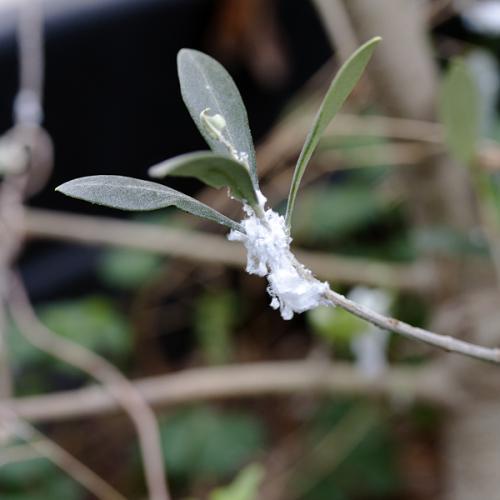
WHAT IT IS AND HOW TO ELIMINATE
Olivo de verdeo / almanzara
Cotton Or Olive Milkweed
Euphyllura Olivina
Pathogen:
Insect
Type:
Risk to the plant:
MILD
Psilas

WHO CAUSES IT?
Euphyllura olivina is an insect known as olive milkweed, which affects olive trees. The insect goes through several stages of development: egg, larva, nymph and adult. During the larva phase, the insect produces a waxy secretion that accumulates in the tender shoots and flowers, where it feeds. Adults lay eggs on leaves and shoots, especially in spring and fall.
SYMPTOMS
Olive milkweed causes damage to tender shoots and flowers, where it lays eggs and feeds. This can cause a reduction in the productivity and quality of the harvest, as well as a general weakening of the olive tree.
• Damage to tender shoots and flowers.
• Reduction in crop productivity.
• General weakening of the olive tree.
• Presence of a white waxy secretion on the buds and flowers.
• Wasting and wilting of young shoots.


DEVELOPMENT CONDITIONS
Temperature:
20°C - 30°C
Humidity:
50% - 70%
HOW IS IT SPREAD?
Insect movements, direct contact with infected plants, contaminated pruning tools.
HOW TO ELIMINATE IT?
Home treatments
Natural allies
There are no natural allies
Chemical treatments
RECOMMENDED PRODUCTS TO ELIMINATE THE PEST
REPELLENT PLANTS
-
RECOMMENDATIONS
- Check young shoots frequently, especially in spring.
- Prune the affected parts if there are few insects.
- Spray the plant with soapy water and Neem oil or garlic infusion to reduce the population.
- Encourages the presence of beneficial insects such as ladybugs.
- Avoid using fertilizers with a lot of nitrogen, which stimulate tender shoots.
- If necessary, apply a mild and ecological insecticide, following the product instructions.

















